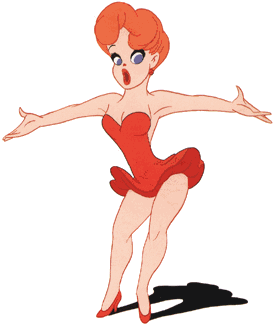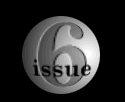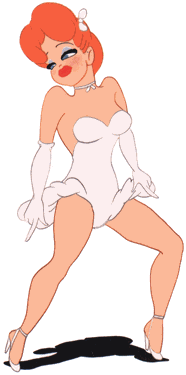|
With their simple storylines and language, exotic backgrounds, supernatural and melodramatic elements, interplay between animal and human characters, and frequent child heroes and heroines, fairy tales were an obvious choice of subject matter for Hollywood animators, just as they were for the medieval mothers who used them to entertain and instruct their children. (The fact that these stories, based on long-standing oral traditions, predate the copyright laws and were thus free to adapt was surely another factor.) In works like Snow White and the Seven Dwarfs (1938), Disney brought the terror of "Old Europe," with its misshapen men, paranoia-inducing forests, and witches masquerading as kindly apple-sellers, to American audiences searching for fresh thrills. A work like The Three Little Pigs (1933) played off classic childhood fears of an unstable world plagued by male-identified monsters (the wolf-father) whose perverse purpose in life was their destruction. Perrault's versions of the fairy tales stressed morality by negative example: in his "Little Red Riding Hood," Red foolishly chats with a stranger (the wolf), and both she and her grandmother are devoured, while the wolf lives to eat again. The Grimms disliked this scenario, and borrowed a hunter from another source; in their version the hunter kills the wolf and slits open its belly, freeing the undigested Granny and Red. Disney followed Perrault in creating frightening worlds seen from a child's perspective and the Grimm Brothers in imposing a happy ending. From both sources Disney drew its devotion to a classical unity, what Bettelheim identifies in fairy tales as the all-important process of "bringing order out of chaos."4

"Red" in Red Hot Riding Hood.
Not everyone in Hollywood was so enamored of order or happy endings or the sentimental school of mindless, grinning "funny little animals." Perhaps the least enamored was Tex Avery, who during his stint at Warner Bros. and MGM made seven formal, recognizable fairy tales and one blackout film ("A Gander at Mother Goose") between 1937 ("Little Red Walking Hood") and 1949 ("Little Rural Riding Hood"). These cartoons represent an assault on the Bettelheim school that sees fairy tales as the source of moral instruction for youth, and, closer to home, on the Disney aesthetic. Avery's versions of these archetypal stories, made to satisfy both children and adults, attempt to reverse Bettelheim by "bringing chaos out of order." For young audiences, Avery preserves the trappings of the genre -- talking animals, supernatural events -- and adds the cinematic touch of physical law constantly challenged. For adults, he litters his work with sexual innuendo and distancing devices that replace the sense of reassuring archetypes with a modernist construct that merges the story with its audience, puts adult preoccupations (e.g., sex) in place of children's, and imagines characters not as clueless tabula rasas awaiting moral enlightenment but as sophisticated, willful creatures with a bottomless bag of tricks. Avery's fairy tales jettison the whole idea of morality, along with other troublesome concepts like logic, sense, and sexual repression. He brings the "big bad wolves" and "red riding hoods" out of the sanctity of the linear narrative and into the service of the gag, creating in the process a unique world of self-conscious "cartoon actors" who know they're in a cartoon and freely comment on their status as fictional creations, undercutting the story at every turn. Part of this approach was an outgrowth of the collaboration of Avery with fellow renegades Chuck Jones, Bob Clampett, and other denizens of Warner Bros.' "Termite Terrace," but Avery's application of modernist elements in an ancient cultural form is the most complex and extreme of the lot.
page 1 of 4
 
|





